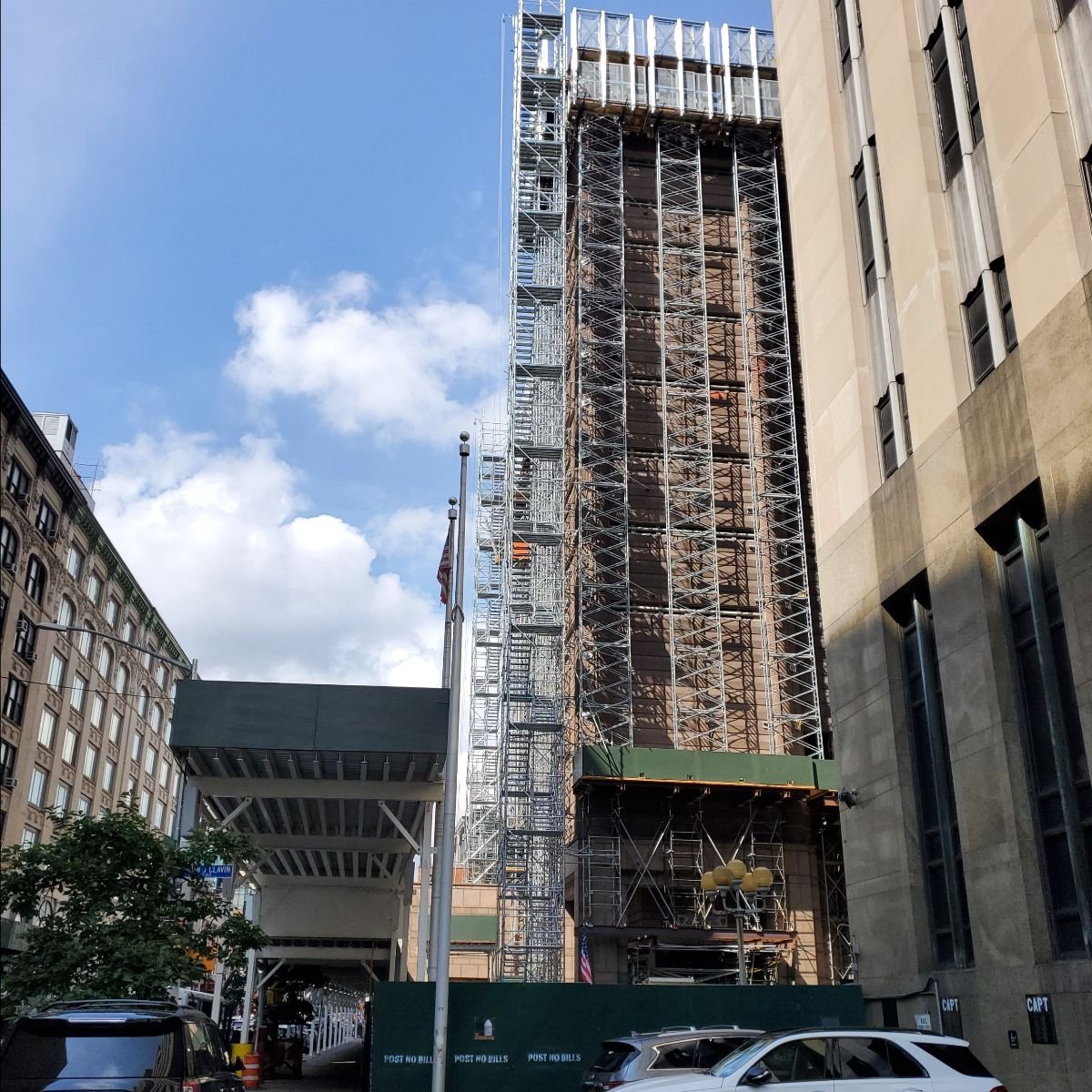City Hall in Disarray: What's Next for Chinatown?
/As many of you have read, Mayor Eric Adams was indicted following a series of high-profile resignations within his administration. This upheaval raises significant concerns citywide, but the uncertainty surrounding the Manhattan Borough-Based Jail construction amplifies those worries for Chinatown.
click image to enlarge
The already controversial project now faces even more questions about its future. As a community, we are heightened in concern over the lack of clarity regarding the project's next steps, especially given the legal turmoil impacting the Adams administration.
To that end, we have sent letters to all of our elected officials, urging them to seek clear answers on how the city intends to move forward responsibly with this plan. We have asked them to address how the project can continue without further disruption and protect the community’s interests.
Amid this political instability, we remain committed to pushing for transparency and ensuring that Chinatown bears the brunt of these changes with a clear, responsible plan in place.
Lippman 2.0: Revisiting Rikers and Borough-Based Jails
The city’s plan to close Rikers Island is behind schedule, prompting the Lippman Commission to reconvene with 17 new members.
JUDGE RANDALL ENG
The city’s plan to close Rikers Island is behind schedule, prompting the Lippman Commission to reconvene with 17 new members. Among them is Judge Randall Eng, whose career makes him ideal for this role.
As the first Asian American assistant prosecutor in New York, Eng later became Inspector General of NYC’s Correction Department, overseeing jail integrity. He was also the first Asian American judge in the state, eventually serving as presiding justice of the Appellate Division, Second Department.
His extensive experience in jail reform and oversight is crucial to the Lippman Commission's work on Rikers and borough-based jails. For Chinatown, his appointment brings much-needed AAPI representation, especially as 25% of borough-based jails are planned in the area. His insight offers hope for fairer solutions that won’t disproportionately impact the community.
We have actively engaged with the Lippman Commission, advocating for a scaled-back "mega-jail" design in Manhattan. Judge Eng’s leadership will ensure the plan is transparent, equitable, and just, protecting Chinatown from an unfair burden while presenting solutions that remove detainees from danger faster than the current plan. NOTE: The Lippmann Commission has said that they expect to present their new report to the Mayor as early as the week of Oct. 14th 2024.
A Call for Accountability in Borough-Based Jail Projects
click images to enlarge
The tragic death of a 64-year-old construction worker at the Brooklyn Jail site in September 2023 due to inadequate safety measures highlights the need for greater worker protection. The worker’s family has since taken legal action, and OSHA is investigating the incident.
Image Text:
Yon Chin Son (above) fell 18 feet through a hole that had been covered by loose planks (left and right) on Sept. 13th while he was removing asbestos on the 11th story of the old Brooklyn House of Detention on Atlantic Ave. in Brooklyn Heights. He died three days later, and his family has filed notice to sue the city for $15 million for negligence in the tragedy.
Gramercy Group's demolition of the Manhattan Detention Complex in Chinatown has similarly posed risks. Their mishandling of the project caused significant damage to the nearby Chung Pak senior housing complex, leading to class-1 violations and stop-work orders. Gramercy’s failure to promptly report these issues, compounded by delayed and outdated air and sound monitoring reports, has only fueled the community’s frustration and concerns over health risks.
click image to enlarge
The dismissive explanation that emissions are “harmless water vapor” echoes the false assurances given after 9/11, when Chinatown faced long-lasting health and environmental consequences. The community now demands independent monitoring of these projects to ensure transparency and safety.
The Troubling Tale of Gramercy Group
One of the companies central to these issues is Gramercy Group Inc., which secured the demolition contract for the Manhattan Detention Complex in December 2021.
Despite filing for Chapter 11 bankruptcy just 31 months prior, Gramercy was awarded this critical contract, raising serious concerns about the city’s procurement process. Gramercy’s track record includes legal disputes and financial issues—such as a lawsuit for incomplete work on a New Hyde Park pool and a $6.7 million liability from a project in Honolulu. How a company emerging from bankruptcy secured such a significant and sensitive contract is unclear, casting doubt on whether financial and legal histories were fully considered in the vetting process.
Corruption Allegations Cast a Shadow
click image to enlarge
Gramercy’s rapid rise to secure the contract occurred amid an era of corruption allegations within the Eric Adams administration. Six months before and after the contract was awarded, multiple investigations into bribery schemes involving city officials and contractors were underway, including a Department of Buildings (DOB) scandal that saw over 24 individuals indicted for manipulating bids and accepting kickbacks. These events cast a cloud over the entire procurement process for city-led projects.
Although Gramercy has not been directly implicated in these bribery cases, the climate of corruption surrounding city contracts raises legitimate concerns about transparency. Was the process fair? Can we trust the integrity of these deals?
A Community Demanding Accountability
For Chinatown, the stakes are higher than ever. Residents have faced serious environmental and health impacts—especially after 9/11, when false assurances about air quality led to long-term health risks. Gramercy Group’s dismissive responses about emissions during the Manhattan Detention Complex demolition, calling them “harmless water vapor,” only deepened the community’s distrust.
We demand independent monitoring of future borough-based jail projects to ensure transparency, accountability, and the safety of workers and nearby residents. Chinatown and Brooklyn deserve more than apologies—they deserve protection and action.
Get Involved
If you have questions or want to get involved in Neighbors United Below Canal, please don't hesitate to contact us. Together, we will continue to fight for the future of our neighborhood.














